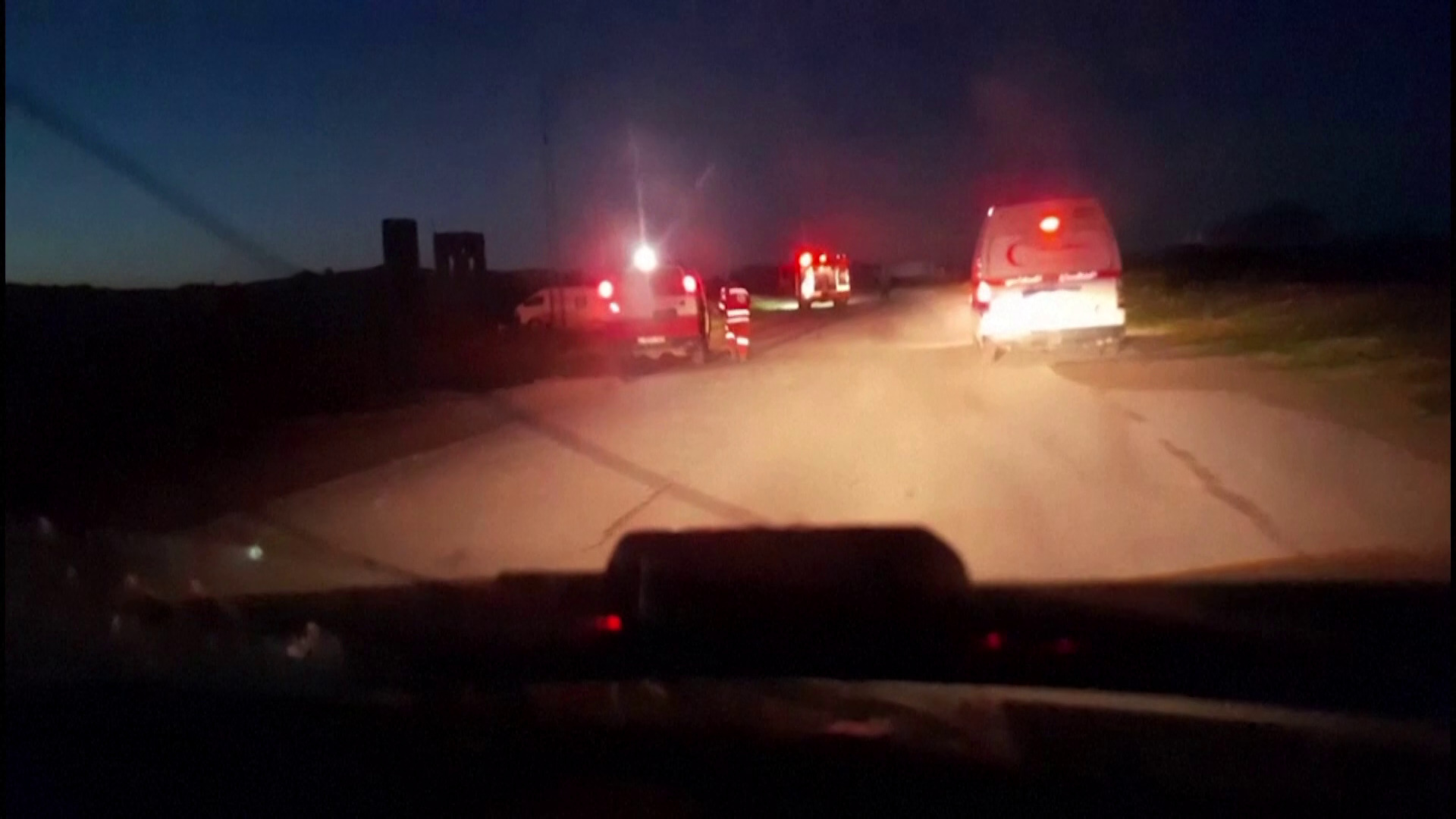Now Reading: Landmines continue to claim lives in post-Assad Syria
-
01
Landmines continue to claim lives in post-Assad Syria
Landmines continue to claim lives in post-Assad Syria

Immediate appeals have been issued to expand the demining effort to remove the dangerous remnants of war still present in the soil of Syria.
Suleiman Khalil, a 21-year-old who lost his leg in a landmine explosion while picking olives with friends, is seen speaking with his father at their residence in the village of Qaminas, located southeast of Idlib, the capital of Idlib governorate. [Ghaith Alsayed/AP Photo]
Four months ago, Suleiman Khalil was gathering olives in a Syrian orchard with two companions, unaware that the ground still concealed deadly remnants of past conflicts. The group suddenly spotted a mine on the ground. In a state of panic, Khalil and his friends attempted to leave, but he inadvertently stepped on a hidden mine that detonated. Terrified, his friends dashed to seek help, leaving Khalil, 21, thinking he had been deserted. The initial explosion severely injured his left leg, while a second blast resulted in the loss of his right leg from above the knee. Using his shirt as a tourniquet on the stump, Khalil yelled for assistance until a nearby soldier heard him and came to his aid.
While the nearly 14-year Syrian war concluded with the ousting of Bashar al-Assad on December 8, remnants of war persist in causing fatalities and injuries. Mines and explosive remnants, extensively utilized by Syrian government forces, their allies, and armed opposition factions since 2011, have contaminated large areas that only became accessible after al-Assad’s administration crumbled, leading to a surge in landmine-related casualties, as reported by Human Rights Watch (HRW). Experts estimate that tens of thousands of landmines are still buried across Syria, particularly in former front-line regions like the rural areas of Idlib governorate.
A recent report from INSO, an international organization overseeing safety for aid workers, disclosed that at least 249 individuals, including 60 children, have been killed, and 379 injured by these munitions since December 8. HRW emphasizes that landmines not only result in casualties but also cause enduring psychological trauma and broader harm, including displacement, property loss, and restricted access to essential services. The rights group has called on the transitional government to establish a civilian-led mine action authority in collaboration with the United Nations Mine Action Service to enhance and streamline demining operations.
Salah Swed, 28, paying respects at the grave of his brother Mohammed, who perished while attempting to deactivate a landmine in their village of Kafr Nabl, located south of Idlib. [Ghaith Alsayed/AP Photo]
Jalal Ma’rouf, a 22-year-old shepherd who lost a limb to a landmine while herding sheep on farmland recently reclaimed from regime forces, at his residence in Deir Sunbul village, situated south of Idlib. [Ghaith Alsayed/AP Photo]
Suleiman Khalil stepping outside his residence in the village of Qaminas. [Ghaith Alsayed/AP Photo]
Personnel from Syria’s Ministry of Defense clearing landmines south of Idlib. [Ghaith Alsayed/AP Photo]
It is estimated by experts that tens of thousands of landmines remain buried throughout Syria, especially in former front-line areas like the rural regions of Idlib governorate. [Ghaith Alsayed/AP Photo]
Since the downfall of al-Assad’s regime on December 8, landmines and explosive remnants have claimed the lives of at least 249 individuals and injured 379, according to the International NGO Safety Organization. [Ghaith Alsayed/AP Photo]
Smoke rising as a landmine is detonated on farmland south of Idlib. [Ghaith Alsayed/AP Photo]






